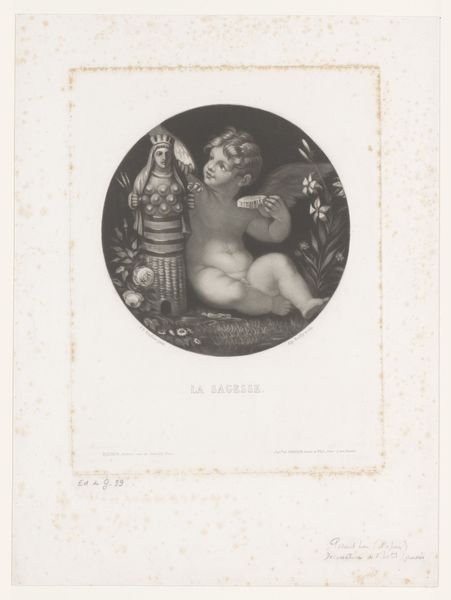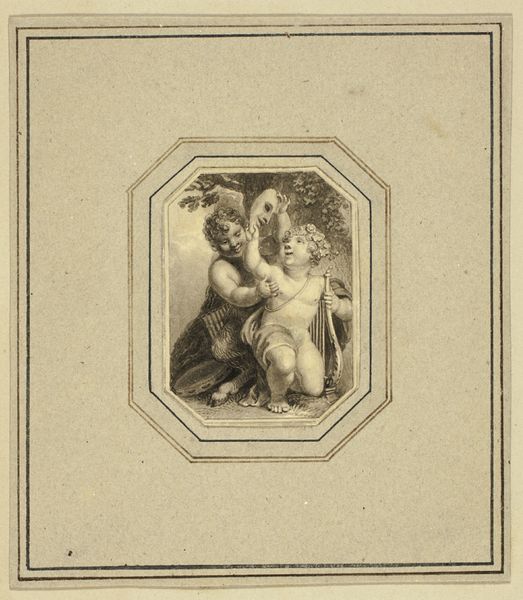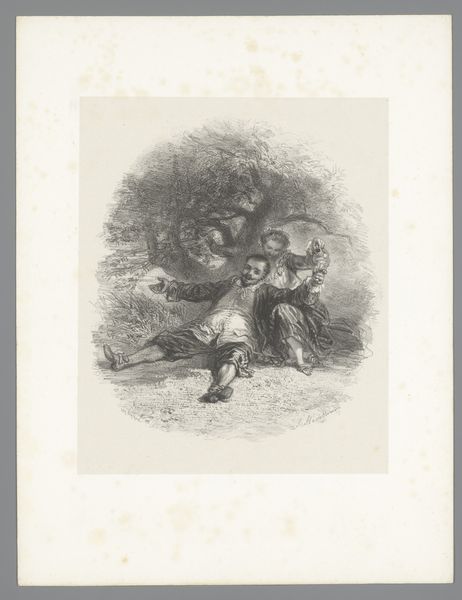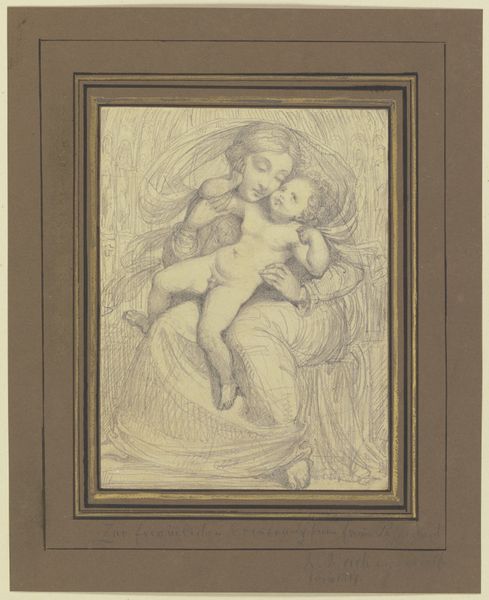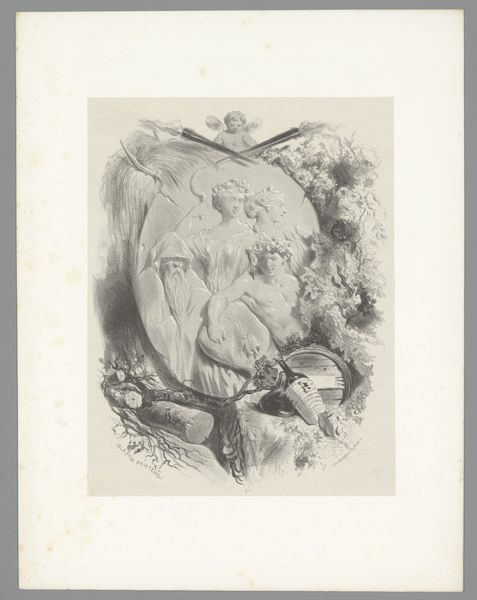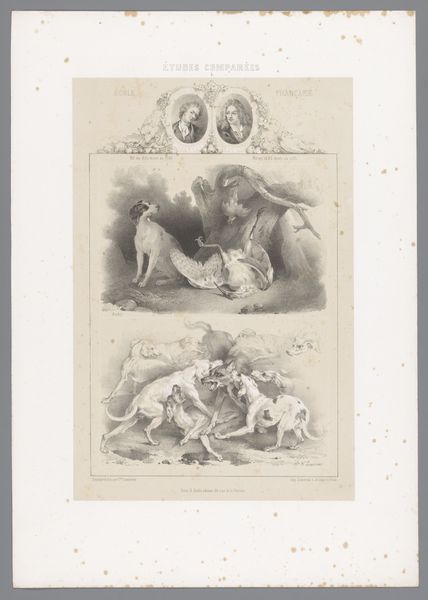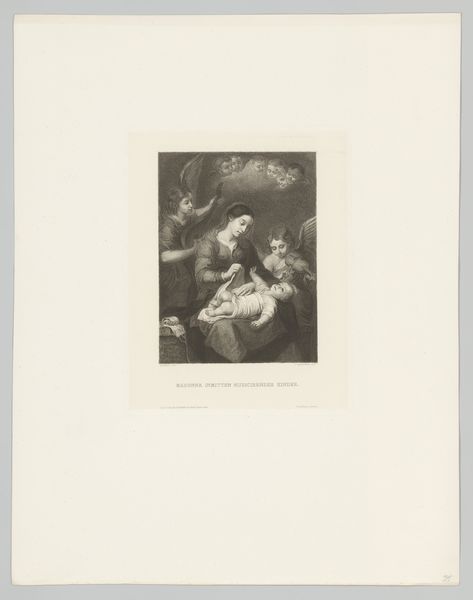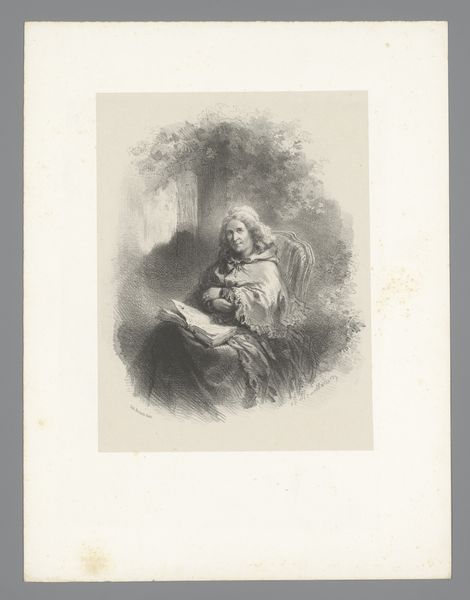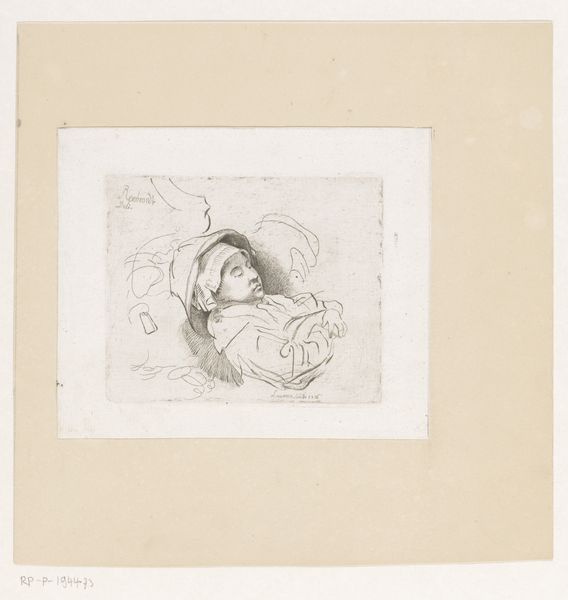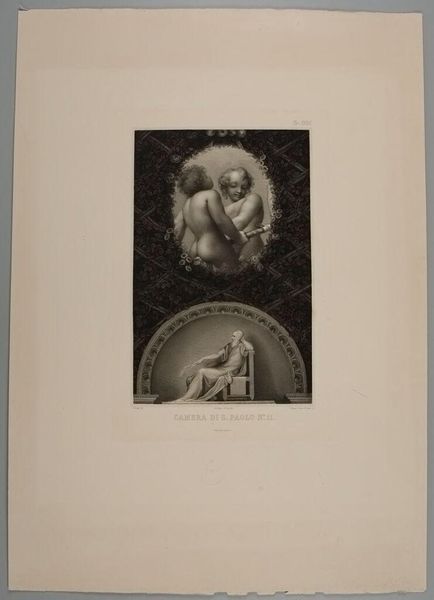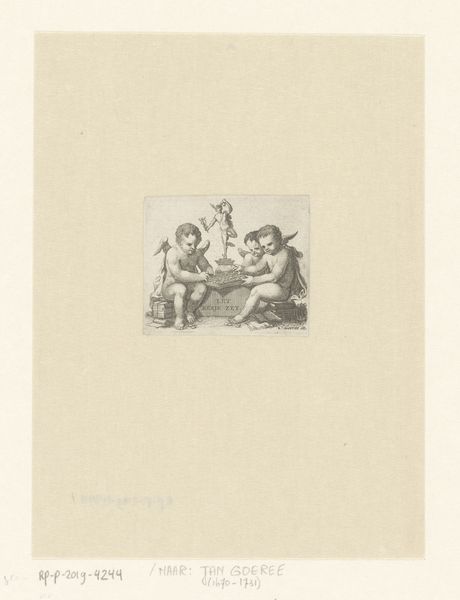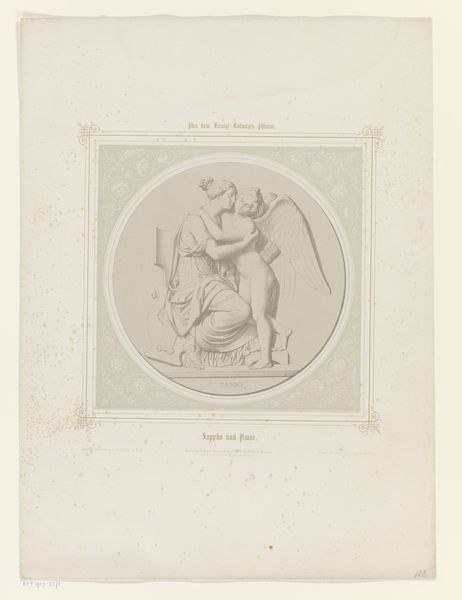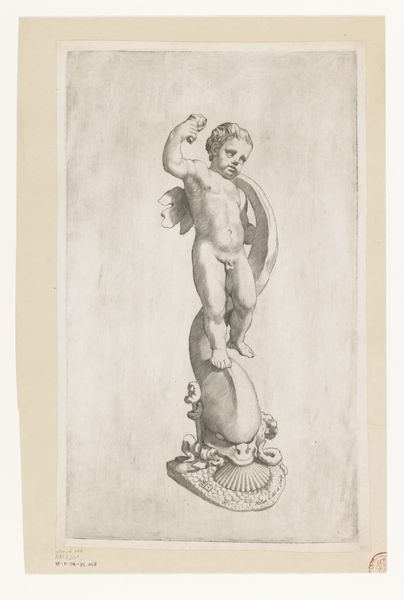
drawing, paper, pencil
#
portrait
#
drawing
#
aged paper
#
homemade paper
#
paper non-digital material
#
pale palette
#
flat design on paper
#
light coloured
#
personal journal design
#
figuration
#
paper
#
11_renaissance
#
personal sketchbook
#
pencil
#
folded paper
#
genre-painting
#
academic-art
#
paper medium
Dimensions: height 191 mm, width 139 mm
Copyright: Rijks Museum: Open Domain
Curator: This delicate pencil drawing is titled "Peinzende amor, naar Raphaël," or "Pensive Cupid, after Raphael," by David-Pierre Giottino Humbert de Superville, and it’s currently held in the Rijksmuseum. Editor: The tonal gradations give the Cupid a soft, almost ethereal quality. His pose, hand to chin, evokes a thoughtful introspection; quite melancholic. Curator: De Superville's role as the first director of the print room at Leiden University Library deeply informed his practice. His copies after Old Masters like Raphael served a pedagogical function, disseminating classical artistic ideals in the Netherlands. Editor: Yes, the form is rendered with precision; observe the careful hatching and the rendering of light. Yet, isn't there also a sense of… academic exercise rather than genuine emotional investment? The oval border further isolates him. Curator: That’s the core tension, I think. This cupid isn’t the mischievous god of love; it is a symbol intellectualized and recontextualized for a specific audience, an intellectual elite. This embodies the Neoclassical shift towards rationality and restraint, visible throughout the artistic institutions of the time. Editor: Indeed, look at the planes of the face and the way the wing structure has been minimized; line and form are paramount. He is no longer a carefree god, just an example of draftsmanship. Curator: And in reproducing Raphael, de Superville positions himself, and by extension his audience, within a lineage of artistic mastery. He is not simply drawing a cupid, but making claims about taste, education, and cultural capital. Editor: It makes one think about originality versus imitation in art, doesn’t it? This image speaks to the complicated relationship between past masters and subsequent artistic endeavors. Curator: Absolutely. De Superville offers a valuable window into the artistic and educational values of his time, underlining the influence of classical ideals. Editor: And perhaps we can all benefit from seeing Cupid contemplate life's mysteries.
Comments
No comments
Be the first to comment and join the conversation on the ultimate creative platform.
